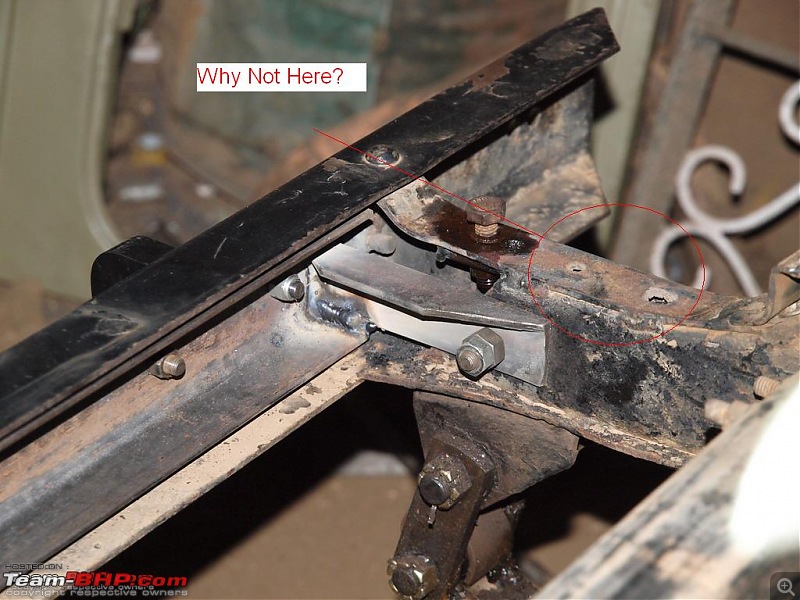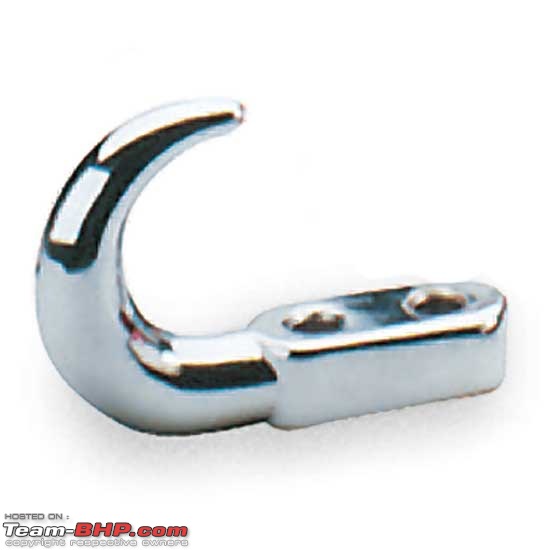|
Quote:
Originally Posted by headers  Sir, guess you got me wrong  I have bold faced that for better understanding  |
I know what you are saying. I have attached it to the chassis, through a U bracket. Now Jaggu says I have overdone it, you say I have under-done it. We are all guessing, and not doing engineering here.
Now if Suresh Stephan, Spike or Behram think it is bad design, then I am bound to fully believe it because they know Jeep and they are practicing engineers in mechanical/automobile domain.
Now this is how engineers speak...  Quote:
Originally Posted by Suresh Stephen  Dear Spike,
I had an axle set like Santhosh had in the FFRA set up and I also has an LSD in the rear. After an OTR in Munnar I found that my axles were twisted very badly. When I checked the hardness it was around 20 HRC whereas for a properly heat treated shaft, I will expect an minimum of 35HRC( depending on the material and heat treatment). I have then got a pair of axles manufactured using EN36 steel and got a proper hardening and tempering done which gave I think about 40 HRC. It was a pain to establish the manufacturing process and i have lost at least some four pairs before establishing the right process. especially which quenching, the shafts used to distort. I have introduced straightening after then with the reference of the splines idone a grinding operation which has removed all the distorsion and also improved the sealing on the axle. Now the axles are working fine But the drive flange spline was eaten away. I have now done an argon arc welding on the axles and drive flange.
Santhosh,
You may not require the thrust spacer. What is required is to ensure that the splines in the inside and outside is properly meshed. Ask Raju to locate axle in the correct distance , cut the extra bolt length and clamp it right other wise you may have oil leaks.
Suresh | Quote:
Originally Posted by SPIKE ARRESTOR  Hello Sir,
Thank you for your reply, although I know hardening and heat treatment processes for axle and its components, i wanted to know which hardening was being referred to here by Arka and Santosh, and hence the query. I would like to add on:-
1. As you have used EN36 steel what kind of heat treatment was done (single quench/double quench followed by tempering?)to obtain a particular carburised depth.
2. I will tell you the procedure with EN8D optional SAE1541.
Metallurgical process- Hot forging followed by Normalising to core hardness of 197 BHN then shot blasting. Induction hardening and tempering is done to achieve the following:-
a) Surface hardness 54-60 HRc
b) Effective case depth at 40 HRc 4.3 to 5.6mm
c) Total case depth at 20 HRc 7.2 to 8.5mm
Core hardness of 197 BHN is checked at the end of the total case depth and surface hardness is maintained +-1 HRc up to minimum depth of 3mm from surface.
Spike
P.S. BTW what kind of spline does it incorporate? |
Last edited by Samurai : 11th May 2010 at 11:45.
| 














 I have bold faced that for better understanding
I have bold faced that for better understanding 


